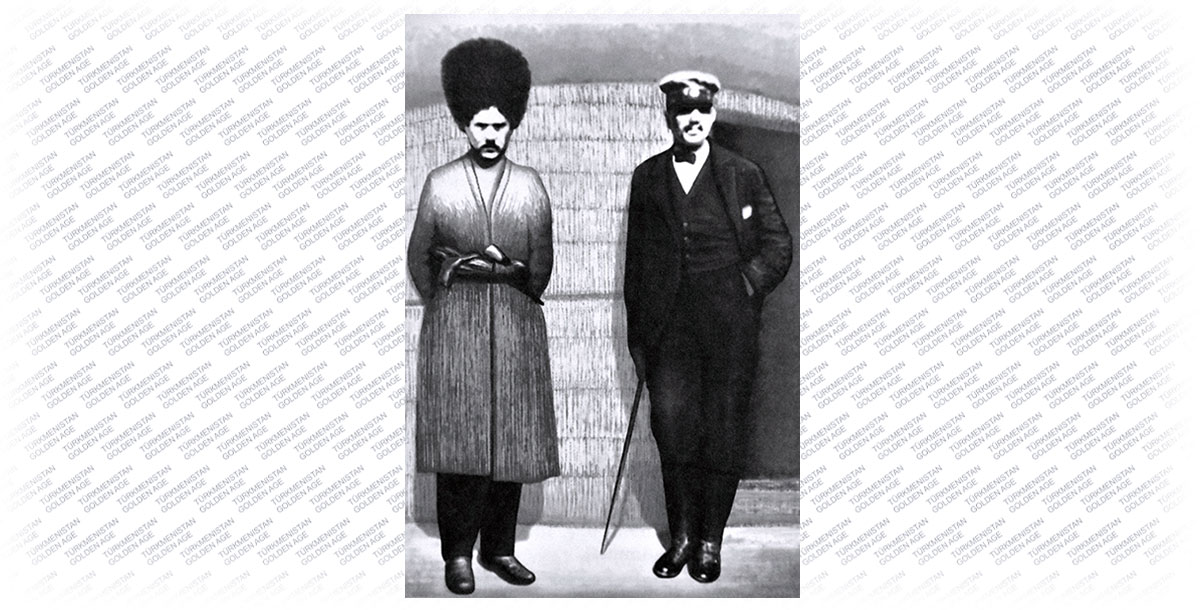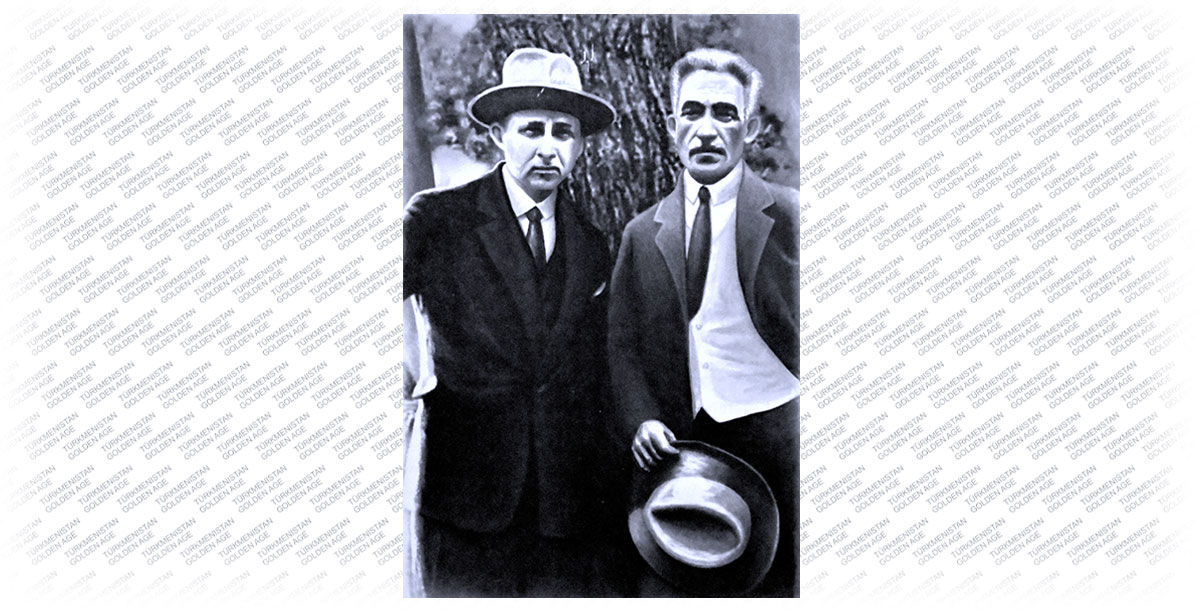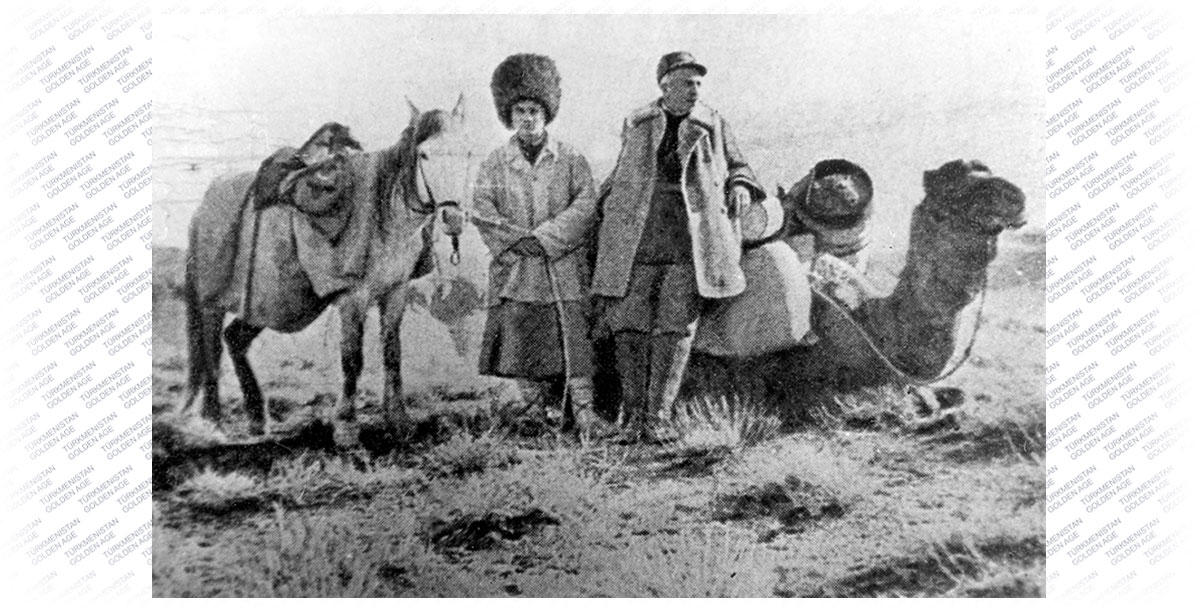In 1929, composer Viktor Uspensky was awarded the honorary title of People’s Artist of Turkmenistan. And it was entirely unprecedented. We will give you an account of what had happened before that.
Born and raised in the city of Kaluga, Viktor Aleksandrovich Uspensky, a graduate of the Cadet Corps, was doing his military service in the Caucasus. But the young man was not pleased with his successfully progressing career. Music lived deep inside him and did not go away for a moment, day and night. What is more, he was a peace-loving and friendly person, and always showed a cordial liking to and lively interest in people from other cultures. Viktor Aleksandrovich terminated his military serviced and later earned a degree in composition from the St. Petersburg State Conservatory.
In 1918, by a quirk of fate, Victor Aleksandrovich found himself in Central Asia, where the Russian composer dedicated his life to preserving Central Asian nations’ folk music heritage and traditions. It was our country that he began his musical ethnographic work with. Starting from 1925, he made three folk music expeditions throughout Turkmenistan. During four years, accompanied by local guides, he traveled to the most remotely situated villages despite the scorching heat and water shortages, sometimes even putting his life at risk. Only a true enthusiast with unbridled energy like Viktor Aleksandrovich had the power to do that. His personal charm and avid interest in music won the hearts of local musicians, who were ready and willing to do everything to help him.
The four years of hard work and efforts culminated in more than 350 transcribed and notated folk songs and melodies. Most of them were included in the monograph ‘Turkmen Music’ co-authored by V. A. Uspensky and V. Belyaev. Published nearly 100 years ago, this wonderful monograph continues to be an indispensable reference book for students of music schools and conservatories.
To pay a special tribute to the feat in the world of Turkmen folk music, People’s Artist of the USSR, film director Alty Karliev began to make the film ‘The Secrets of Mukam’ in 1973. The script was written by Hudaiberdy Durdyev, who was a big fan of bagshis. The film portrays the folk song collector and Russian explorer Viktor Uspensky. In one of the outlying villages, he meets an old musician and singer, named Didar, who tells the visiting researcher the remarkable story of his mother, Karkara, the first Turkmen woman bagshi. She is taught to play the dutar by Dovran, a talented young dutar player, while keeping it secret from her father, who strictly forbids his daughter to do that. Karkara is making incredibly impressive progress. Once, Dashberdy Khan hears the young woman sing. He is enormously impressed by her singing and falls in love with her. But the woman rejects his love and in fear of being persecuted, escapes with Dovran. Feeling deeply insulted, Dashberdy Khan orders his servant to kill Dovran. Karkara loses her beloved husband, but she preserves his songs for the people. Many years later, Karkara returns to the native village as a well-known bagshi. Although her fellow villagers have heard of her fame and recognition before, they decide to hold a singing competition between Karkara and Gajaly Bagshi, a favorite of the khan. The competition between the man and the woman for the best bagshi and for the right of the woman to play the dutar is long and thrilling. And Karkara wins it!
We met with assistant director of ‘The Secrets of Mukam’, People’s Artist of Turkmenistan Kakajan Ashirov. This is what he told us:
- Many interesting things happened during the filming. Vladimir Krasnopolsky, the then actor of the A. S. Pushkin State Russian Drama Theater, had been invited for the part of Uspensky. Beyond all doubt, it was the director’s winning formula. The intelligent, handsome and well-built actor with a pleasant face had a striking resemblance to his character. That was the determining factor back then. Besides, the actor and his character had much in common: they both were born in Russia, and traveled to Central Asia. This helped Krasnopolsky to better understand Uspensky and really put himself in the place of his character. Incidents also took place during the filming. For instance, when shooting the dust storm. Traveling from one village to another in the film, Uspensky gets caught in the sandstorm in the desert. To recreate it in the movie, a jet airplane was used. Its engines created a massive wall of sand in the air. Krasnopolsky was supposed to ride a camel through the dust storm. Shocked by the terrifying sight, Vladimir Matveevich flatly refused to do it. The filming equipment was standing idle, the cast and crew could not continue working on the movie. Even Alty Karliev was totally bewildered … And then I (who was young and reckless back then) proposed:
- I can stand in for Vladimir Matveevich in the scene.
- But you are not as tall as Krasnopolsky and do not resemble him in any way, Alty Karliev objected to my idea.
-I will take care of it, camera operator Anatoly Karpuhin, said elated at the idea, and viewers will not notice anything. When I was helped to mount the camel, and the engines were switched on, I had to go through hell. The only thing I wanted at the moment was to avoid reshooting the scene! This is the story behind one the most extraordinary scenes of the film.
The starring role of Karkara played by Liza Karaeva posed a problem for the actress as well. Liza Karaeva, who had an uncanny ability to communicate her emotions in front of the camera, fully inhabited her character and delivered a brilliant performance in the movie. However, the actress could not play the dutar, but the film was set to feature her hands playing the instrument in close up. If the film had been made today, it would not be a problem at all. There are now plenty of girls and women, who are a bagshi by profession. As for the film, a realistic solution was offered to the problem. One of the music school students, a virtuoso dutar player, had slender and graceful fingers that looked like those of Liza Karaeva. It helped to settle the issue.
* * *
‘The Secrets of Mukam’ was a huge success and a big hit with viewers. It has been recognized as one of the cinematic masterpieces of Turkmenistan. No less important was the fact that Nury Halmamedov had composed the soundtrack for the film. The music and the example set by Karkara may have inspired many Turkmen women to learn to play the dutar. And today they delight their fellow countrymen with their outstanding musical talents. The book ‘Turkmen Music’ co-authored by V. Uspensky and B. Belyaev has been republished in two colorful volumes and has gained in popularity.
Tamara Glazunova
Photo: Yuri Shkurin









